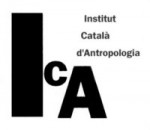7th – 10th November 2012
Facultat de Geografia i Història - Universitat de Barcelona
Wednesday 7/11/2012
Thursday 8/11/2012
Friday 9/11/2012
Saturday 10/11/2012
Peace Dove in the Front Command RoomOn Drawing and Blurring the Boundaries of the Nation in the Space of the Urban in Haifa
PHD Candidate The Department of Anthropology and Sociology (Rolly@shatil.nif.org.il)
Abstract
63 years of the 1948 war, during which 74,000 Palestinians left or were deported from the city never to return, Haifa, Israel’s third largest city, again has 10% Arab population. Ignoring the past, it’s leaders like to present it as ‘a symbol of coexistence’, and to emphasize peaceful relations between the city’s various communities. But behind the scenes the conflict is alive and kicking, and various forms of resistance can be detected.
The MA thesis Peace Dove in the Front Command Room, on which the lecture will be based, deals with the way Haifa manages the tension between the wish to be a Hebrew Nation-City, and the wish to present itself as a “Model of Co-existence”. The research is based on ethnographic observations of daily life, focus groups and interviews with various Haifa residents. Its basic assumption is that collective identities are cultural constructions, created in a dynamic way in the urban space, rather than static, essentialist and primordial features. The city is not seen as a container of two coherent communities, but as a site in which various complex relationships are built among a multitude of actors, who emphasize or blur theirs and the other’s identity in a variety of contexts. It follows the way the boundaries of the nation are drawn and blurred in the space of the Haifa urban landscape, and studies the way conflict is managed and categories are structured under the influence of global social and economic forces; and it shows how the city both creates strict separation mechanisms, and actively resists them.





